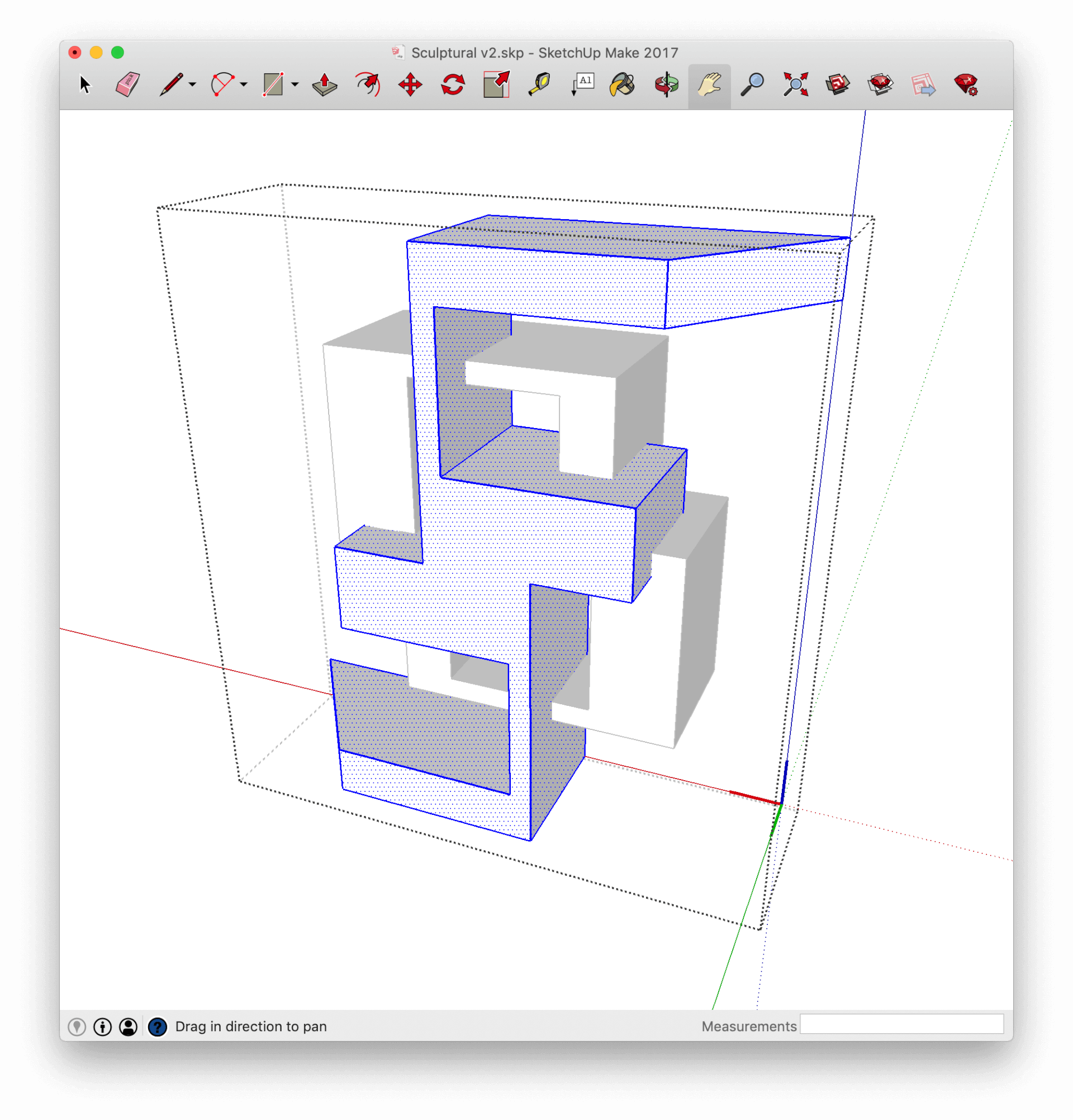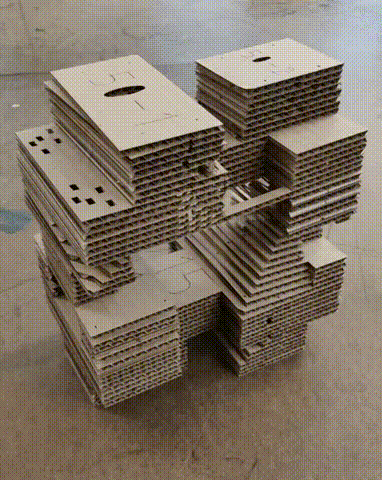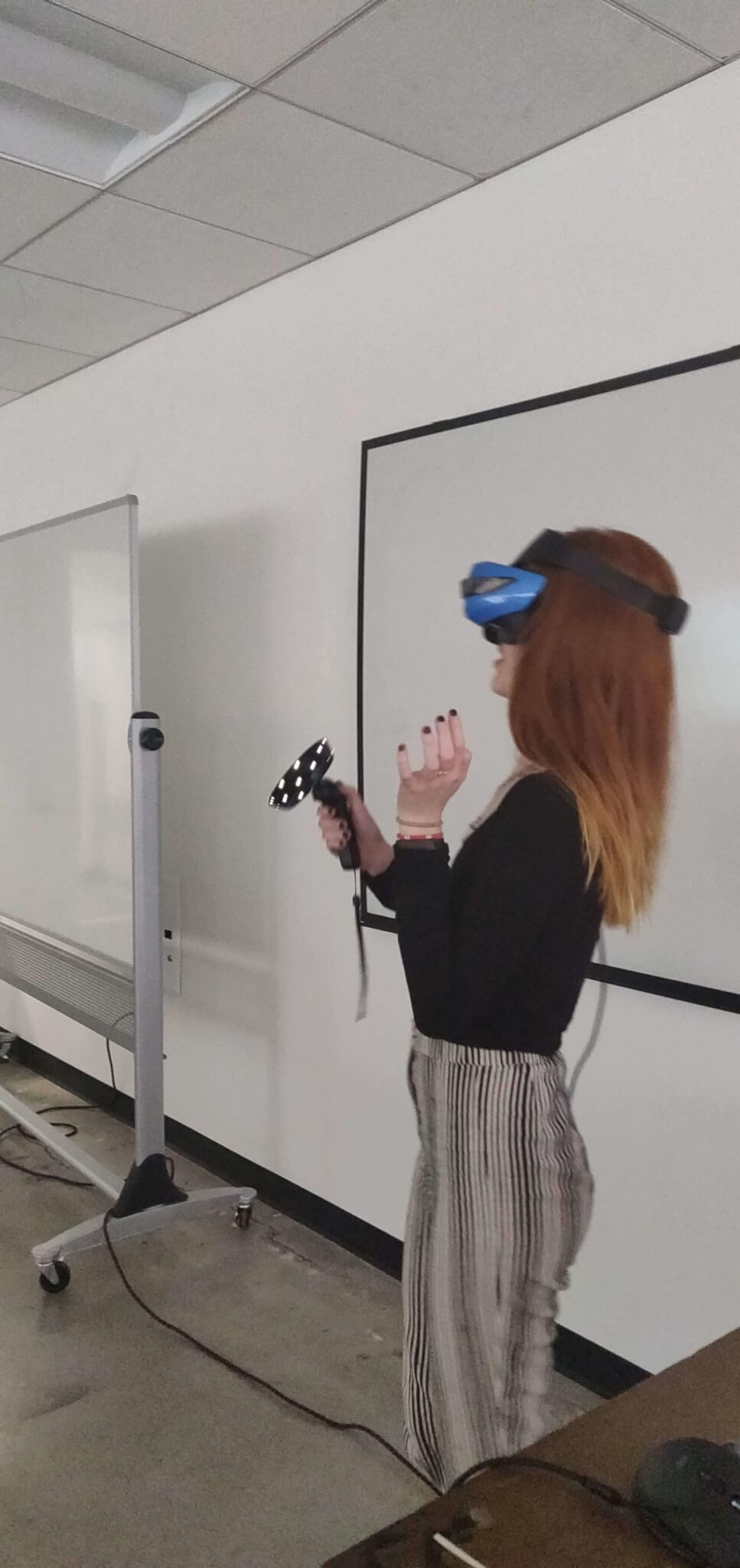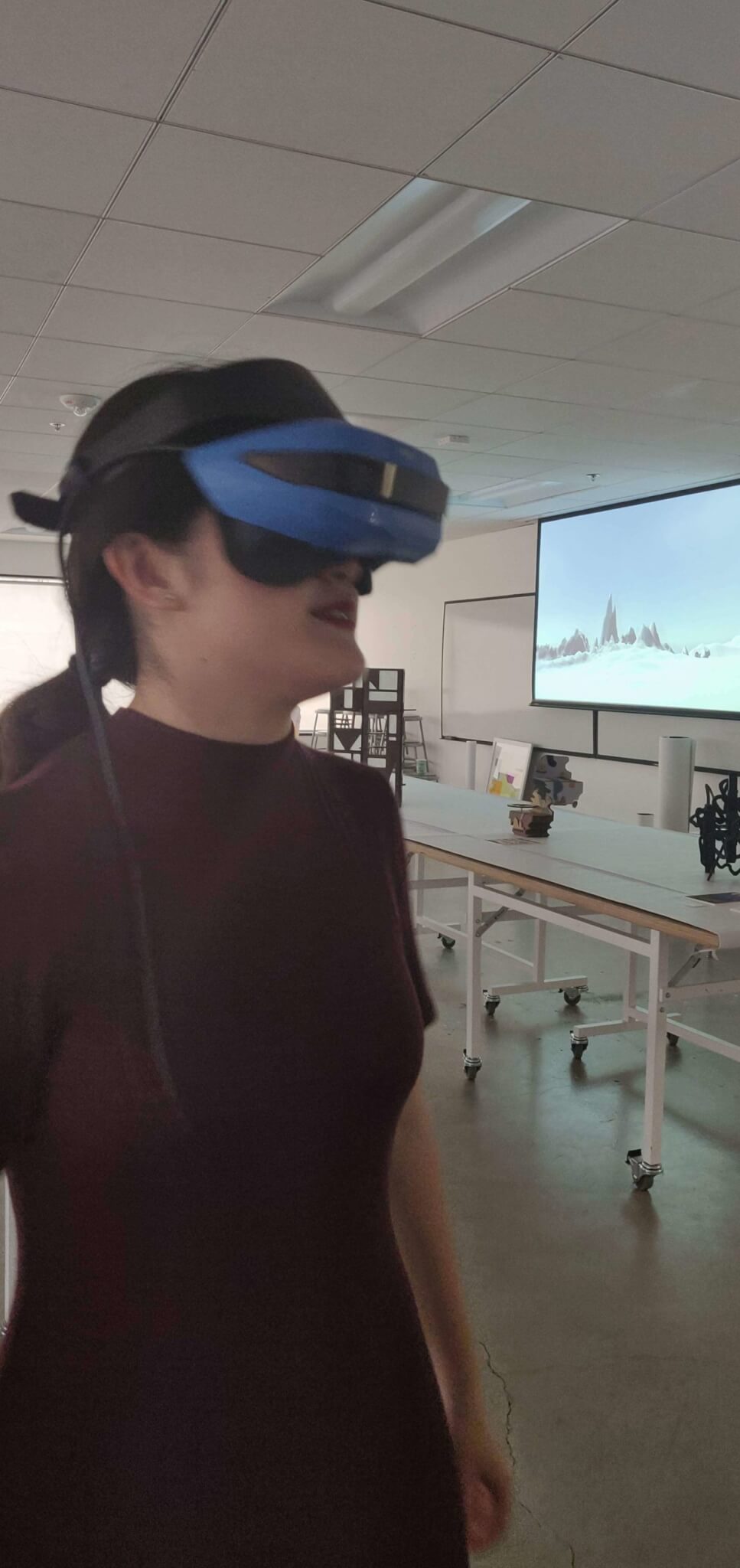Aksala VR Sculpture
My final project for Design 2 was to create a sculpture to explore two objectives:intersecting volumes and interesting footprint. I also wanted to explore the concept of a VR installation piece, for which I created several prototypes.
Software
Sketchup, Slicer, Corel, and Unity
Timeframe
3 weeks (April, 2019)
Form Exploration
After sketching out several designs, I created my sculptures in Sketchup and utilized its components feature to maintain symmetry of the model.

Prototyping
From there I exported my 3D files from Sketchup to Slicer, a program that imports 3D model files and then slices into layers that gets exported into a laser cutter as a sheet file of size and thickness of my choice. Using Corel, I set the sheet file up for laser cutting.
Physical Exploration
Fortunately, Slicer shows a tutorial on the screen for sequentially assembling the numbered parts. After building my first prototype I added two dowels, on two diagonal corners, to prevent assembly slippage. Lots of hot glue later this was the result.
My professor offered constructive critiques before giving me the go-ahead to attempt the project in Virtual Reality.

Diving into Unity
I exported my model out of Sketchup to import as an OBJ file into a Unity scene with the Steam Teleportation System already configured. Using the brush tool, I placed mountains and valleys by editing the height bitmap. Using free textures online, I added materials for grass and water effects to some of the solids in the model.
Takeaways
For many people trying my VR installation, my magic moment was watching them exploring the inside of the virtual space: a first-time VR user crouched on the ground to look up into the water, and another danced to see what would happen.
I realized that I wanted to create experiences that amplified the exploration aspect of VR.



© Dillon Chi 2024